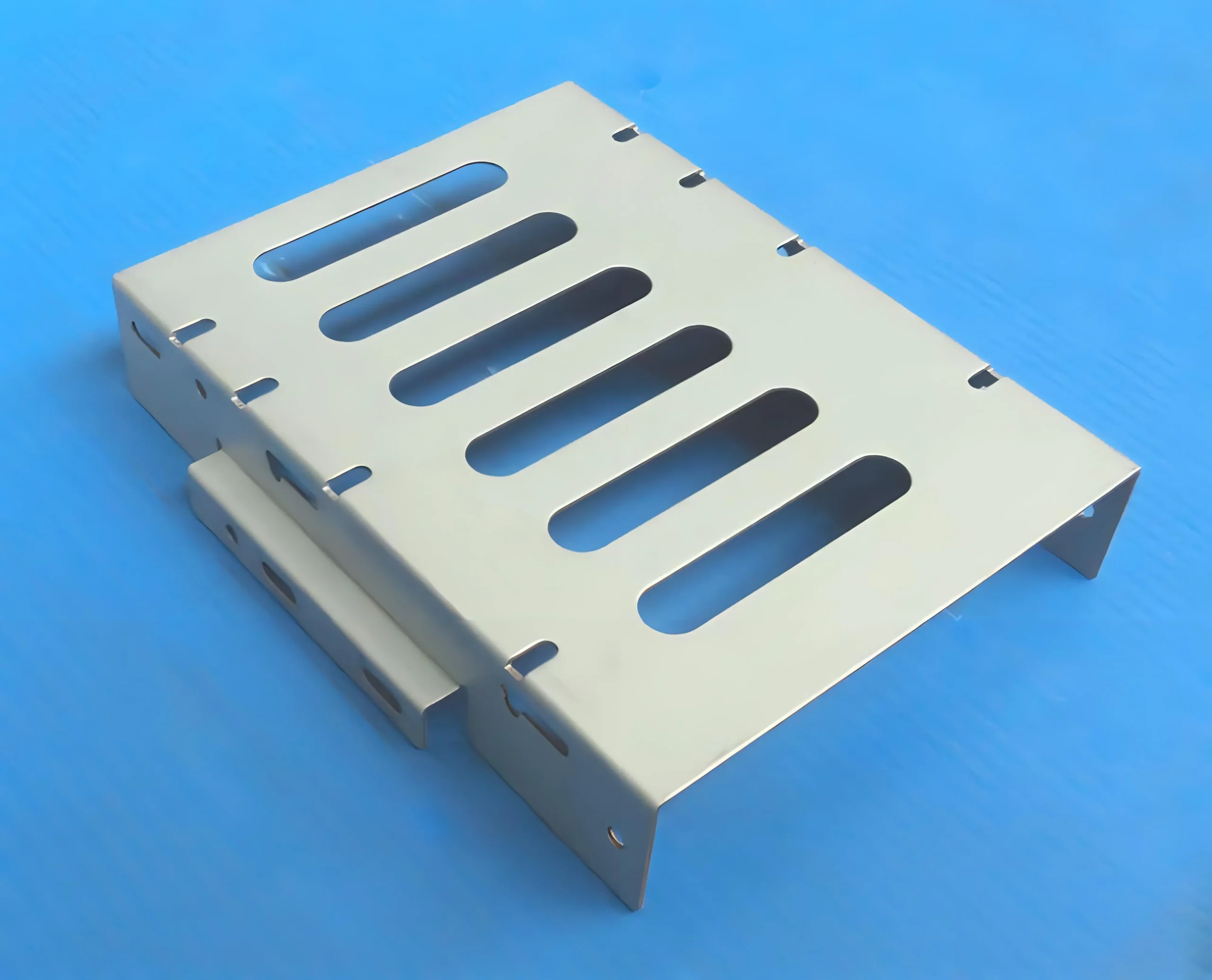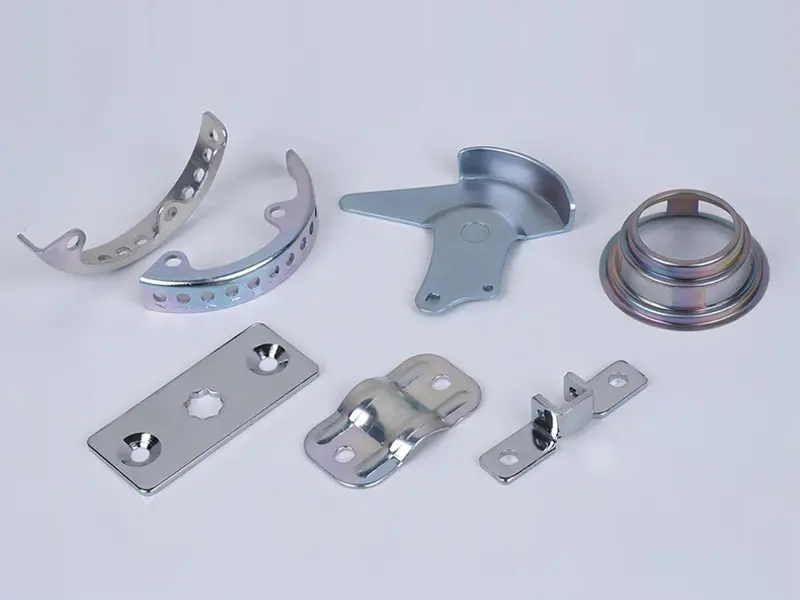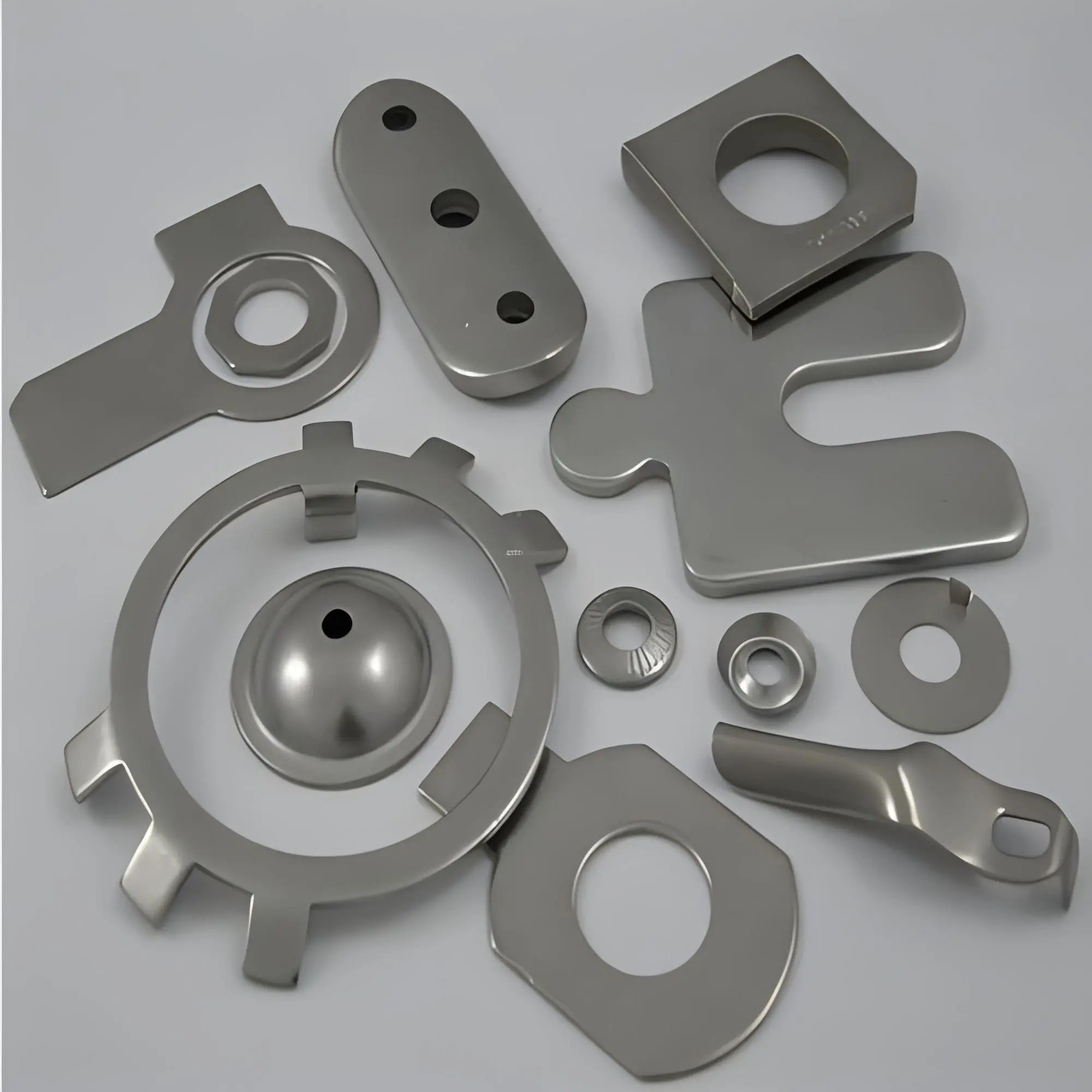Stamping
What’s the sheet metal stamping process?

The sheet metal stamping process is a forming processing method that relies on press machines and molds to get external force for the plates, strips, pipes, and profiles to cause plastic deformation or separation, then obtaining the required shape and size for stamping parts. The process offers several advantages, including high productivity, repeatability, and the ability to handle a variety of materials and thicknesses. With the unprecedented consensus on the importance of developing advanced manufacturing technology, stamping technology has made unprecedented progress in both depth and breadth. It is characterized by the combination of high and new technologies and the beginning of great changes in methods and systems.

The sheet metal stamping process can be divided into four basic processes:
1. Blanking: The stamping process that separates sheets (including punching, blanking, trimming, sectioning, etc.)
2. Bending: It is a stamping process that bends the sheet along the bending line into a specified angle and shape.
3. Deep drawing: A stamping process that turns flat sheets into various open hollow parts, or further changes the shape and size of hollow parts.
4. Forming: a stamping process that uses various local deformations of different natures to change the shape of blanks or stamping parts.
Sheet metal stamping process characteristics
- The sheet metal stamping process is a processing method with high production efficiency and low material consumption. The stamping process is suitable for the production of larger batches of parts and products, facilitates mechanization and automation, and has high production efficiency. At the same time, stamping production can not only strive to achieve less waste and no waste production, but also even if there are edges in some cases The leftover materials can also be fully utilized.
- The operation process is convenient and easy, and the operator does not need to have a high level of technical skills.
- Stamped parts generally do not require further machining and have high dimensional accuracy.
- Since stamping parts are made of sheet metal, their surface quality is good, which provides convenient conditions for subsequent surface treatment processes (such as electroplating and spray painting).
- Stamping processing can produce parts with high strength, stiffness, and lightweight.
- Stamping parts produced in batches with molds are cheap
- Stamping can produce parts with complex shapes that are difficult to process with other metal processing methods.
Due to the advantages of stamping metal parts, stamping processing has a wide range of applications in various fields of the national economy. The applications of stamping metal parts are as follows:

1. Aerospace industry
In the aerospace industry, due to the special structures and functions of aircraft, missiles, and engines, sheet metal structural parts are widely used, such as aircraft wall panels, missile casings, and engine blades.
2. Automotive industry
Automobiles are one of the main applications of stamping metal parts. In the automobile manufacturing process, a large number of stamping metal parts are used in the manufacture of the body, chassis, engine, interior, and other components.
3. Household appliance industry
Stamping metal parts also has important applications in the home appliance industry, such as washing machines, refrigerators, air conditioners, etc. all require a large number of metal stamping parts.
4. Telecommunication
Stamping metal parts are also widely used in the field of electronic communications. For example, metal casings, keyboards, connectors, etc. in electronic products such as mobile phones, computers, routers, etc. are all manufactured through stamping processes.
The material of stamping metal parts:
The commonly used materials for stamping metal parts are low titanium alloys, carbon steel, stainless steel, aluminum, copper and their alloys, etc. Their high plasticity and low deformation resistance make them suitable for cold stamping processing.
- Copper alloys and aluminum alloys have good ductility and excellent electrical conductivity. Therefore, this type of material is often used to produce internal components of electrical equipment.
- Carbon steel and stainless steel are often used to manufacture equipment casings, structural components, boxes, etc.
- Titanium alloy is mainly used in large equipment, aircraft, ships, satellites, and other scenarios that require low weight and high strength. The processing technology is difficult and expensive, so special stamping oil must be used when titanium alloy stamping to improve the process level.
The stamping service at DMTC:
DMTC provides high-quality stamping services as a top custom metal stamping company in China. We own advanced equipment and experienced experts, use high-precision sheet metal stamping technology to meet customer needs, and get high-precision and high-quality stamping metal parts. During the stamping process, we use CAD/CAM integrated design software to realize digital control of the entire process from drawing design to processing and production, ensuring product accuracy and consistency. If you are looking for a custom metal stamping company, please contact us, we will be your best supplier!
